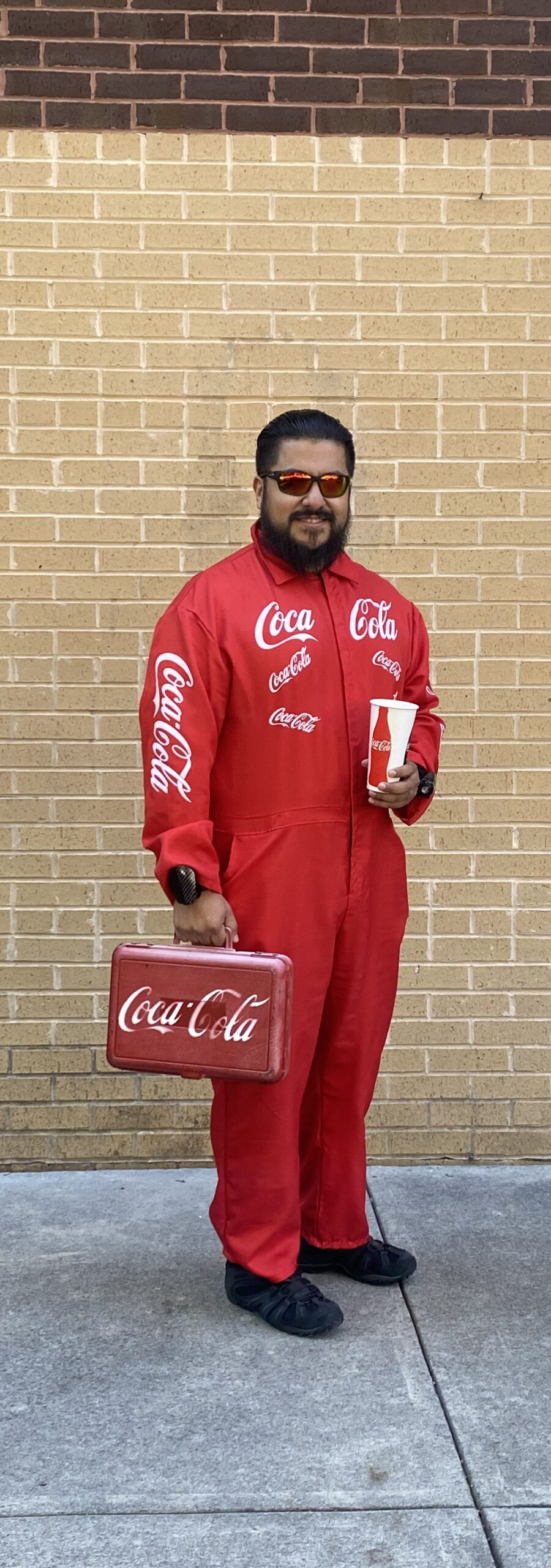The rise of Coca-Cola Man
He has become somewhat of a legend on campus. On Yik Yak, students post blurry pictures of a man in a red suit reminiscent of the famous Bigfoot or Loch Ness Monster photographs. Last semester, flyers adorned doors: “Please help us find the Coca-Cola man!” This semester, students may have seen him gazing at an unnerving statue of himself outside of Thaw Hall. Who is the Coca-Cola Man? What does he want?
Temis Guzman — first-year student, veteran, retired firefighter and Coca-Cola Man — has led quite an interesting life. He served in the Air Force, worked as a firefighter in New York, wrote a comic book and is now a student at Maryville College, majoring in Art.
While serving in the Air Force, Guzman started thinking about innovative approaches to sanitation, he said, using methods like UV lights and other self-sanitizing technologies as preventative measures. In 2011, he left active duty and moved to Tennessee. When the COVID-19 pandemic rocked the world in 2020, Guzman was inspired to think about his ideas on a much larger scale. He envisioned buildings equipped with UV lighting systems designed to aid in disinfection, coupled with the integration of various technologies for enhanced sanitization.
“I literally retired early so I could chase these dreams and make it a reality,” Guzman said.
So why the suit? Why Coca-Cola Man? And what does Coca-Cola have to do with germs?

Guzman’s goals are threefold. Firstly, to capture the interest of the Coca-Cola Company in securing financial support for his idea for the transformation of the Sutton Science Center that would incorporate advanced sanitation techniques. Secondly, to discuss the future of advertising with the company. And thirdly, to pitch his idea for redesigns of their merchandise.
“I don’t like going to the middle-man … I’m going to go straight to Coca-Cola and ask them,” Guzman said.
Guzman said Coca-Cola was his go-to because of their reach and marketing power. He also believes the company is more well-liked than Pepsi.
As for the future of his marketing, Guzman has a specific vision.
“What if a company said, ‘Hey! I want to pay you a salary to just wear a suit and walk around,’” Guzman said.
Guzman created his iconic light-up Coca-Cola suit using electronics he disassembled and then reassembled. He started wearing it at night to get the public’s reaction, walking from the ceramics studio in Clayton to Thaw Hall to purchase one Coca-Cola soda. He would then walk around campus with his beverage, lighting up the night in his suit. His ritual inspired a campus legend.
Guzman is inspired by the legacy of Maryville College alum Kin Takahashi, he said. As a student, Takahashi decided the school needed a YMCA and gym. He rallied not only fellow students and staff of Maryville College, but also local town residents. Student workers pressed more than 300,000 bricks for the building, and the result is what we now refer to as Bartlett Hall.

“This is a blueprint. If a student created this, it could be done again,” Guzman said.
To Guzman, Coca-Cola Man is a performance art.
“I’m showing off all the exciting, innovative things that we can do, and that’s what my performance is,” he said.
At the end of the day, Coca-cola man’s mission is simple: “I hope I get to inspire people.”
Guzman’s comic book, “The Rise of Waffle Hero,” is available for purchase on Amazon. Fans can also find his Coca-Cola Man stickers on RedBubble.


Epic!!!
He’s got big ideas and bigger persistence. He’s waiting for the rest of the world to catch up with him.